Building Ideas & Tips
How to Build Card Houses
Videos:
(More Videos on the Kardtects YouTube Channel – Subscribe Now) In the above video we show how easy it is to build with Kardtects, constructing a complete castle in less than two minutes. While it will take practice to construct this fast, anyone can master the techniques involved in minutes. Give it a try yourself and find out how easy it really is!
Blue Prints: More ideas on Card Structures to build HERE.
Click on the above Prints to print out page and follow links to particular videos demonstrating the build of the particular structure featured on print.
Plus, Subscribe to our Kardtects YouTube channel, Follow our Facebook page, and Subscribe to the Email Newsletter to receive updates and exciting deals and specials.
General Directions on How To Build With Kardtects
There are several methods which are used for building with Kardtects cards. The following are the most common, and each builds fantastic structures in their own special kind of way. For instance, the Kardtects Square method allows quick and fast building of structures, using the least amount of cards. Many of the Kardtects creations that are pictured on site use this method.
Here is a video demonstrating the ‘Square Method’:
The T-method, however, works great for building large towers. Its method provides the strongest foundations and is the most difficult for Destroyers to knock down.
Here is a video demonstrating how the T-Method can be used:
.
Another way to build with Kardtects cards is the Triangle method. This technique is great for creating interesting designs and offers challenging fun. It is the least stable but makes wonderful ‘trees’ and ‘steeple’ tops.
No matter which way you choose to build with, they all begin with just two cards. If you can lean one card against another (and you surely can), you are well on your way to building card structures that will amaze. Master the Fun!
The first step to all methods is to choose an ideal building area. A carpeted floor or mat, with little or no gusty air flows, works best.
How to Build Using the Square Method:
All Kardtects structures begin with just two cards. If you can lean one card against another (and you surely can), you are well on your way to building amazing card houses!
Step 1: First, choose an ideal building area; a carpeted floor or mat with little or no air flowing works best. Then, begin building by holding one card, and slightly lean a second card against the top corner of it. A card stand could be used on the first card to help keep it standing, if needed.

Or…

Step 2 and 3: Add a third card by slightly leaning it against the other corner of the top card. Angle it a little towards center. The fourth card will now lean nicely against the bottom two corners of the side cards and finish the square base.


Step 4: Now add a roof. Place the roof cards in a way that creates an overhang, and rests on opposite tops of wall cards. This overhang provides
space to build a second level upon.

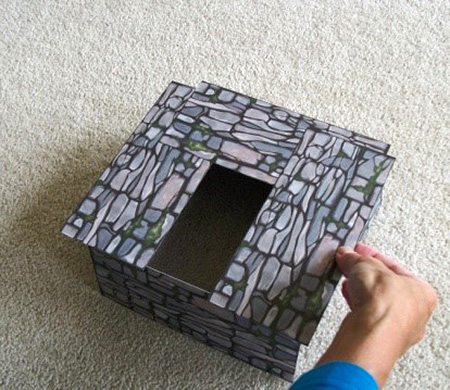

A small inner square is formed in this process and can be left open when building higher levels. You can choose to cover it, if it is your final level.
A second level is added by following the first 4 steps.
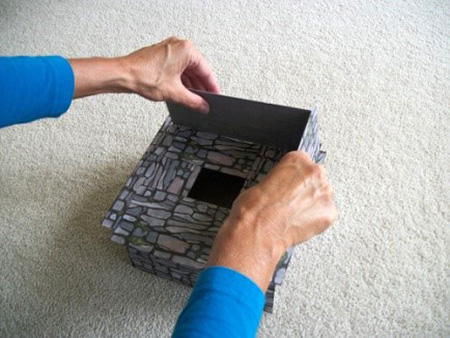

You can choose to continue building up to see how high you can go, or you can choose to build wider.


To go wider, simply add other squares on to the initial first. Do this by leaning a card against the top and adding a side card (with a slight inner angle). Go as wide as you want. Add the final face cards. These will overlap each other a bit. Then add the roof, remembering to leave overhangs. Start a second level by repeating the process.

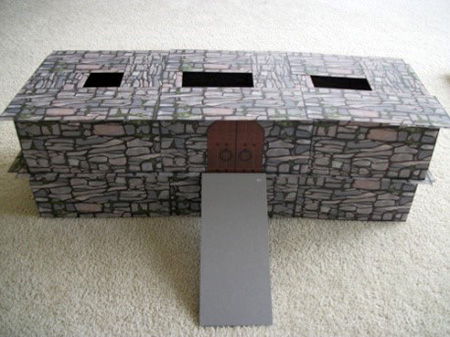
Continue this slightly leaning and adding of cards to build whatever you imagine. Using different specialty cards, like doors, windows, and tower tops of the Grisroc Castle set, a castle is built.

The above is only one suggestion of what can be built with Kardtects cards. There are endless creations, and they all begin with the leaning of just two cards. With practice, card building becomes easy. And what you build with Kardtects cards are fantastic structures to be proud of.
How to Build Using the T-Method:
For building with the T-method, begin by forming a T shape. This is achieved by holding one card and leaning a second card against it at the card’s half (or close). (again, if needed, a card stand could be used on only the first card.)

Next, add a third card by leaning a card against the top part of the T shape. Then, create an inner square by leaning a fourth card against the third, while being careful not to push over the card that will form the top of the fourth card’s T.


Continue to T off cards and create squares. You may notice that four squares using the T-method is about the same size to one square made using the Square method. It is easy to understand why the T-method offers more strength for large, towering, structures then. Nonetheless, each method has its purpose. And when building 5-10 level structures, the Square method works fine.

The edges of the T method structure can be closed nicely off by placing cards around the outer sides of the size you want to build. There will be some overlapping of cards. A roof can be added and a second level can be built upon it. Continue leaning, and adding cards, and you will quickly see how easy it is to build a card house!

How to Build Using the Triangle Method:
Another fun way to build is the Triangle Method. Start by standing two cards lengthways and leaning their tops against one another.

Do it again right beside it, and then add a roof card over the top of the two steeples to help keep it secure.
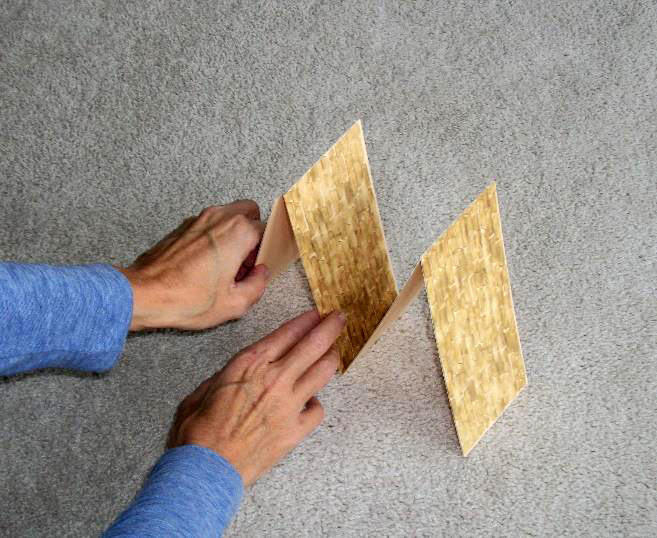

You can go as wide as you want. It helps to place a roof card over each new triangle right away for stabilizing the triangles. The next level is then built on top of the roof cards. Each level is one less from the number of triangle bases used on the level before it.
Because cards of the Triangle method are positioned lengthways, if you plan on building more than a few levels high, cards should be doubled or tripled up on the base and lower levels, for providing the needed strength to the length of the cards in order to hold the weight of the higher levels.
It is always fun to see how wide and high you can go!

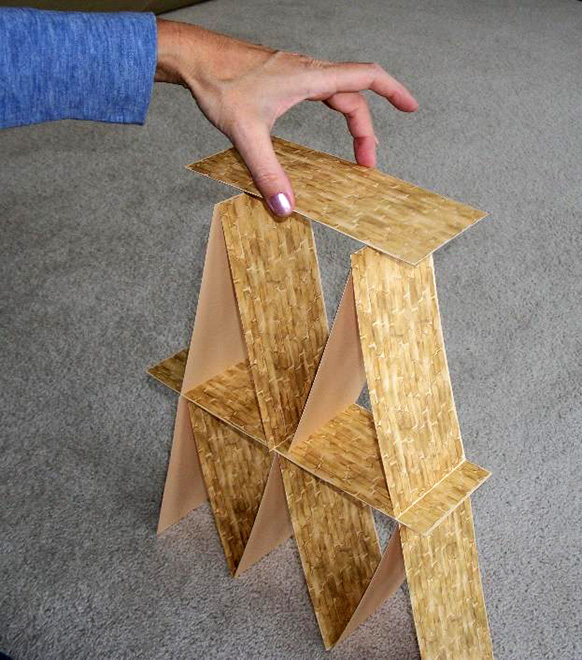


PDFs
For more information, download the following PDF:





